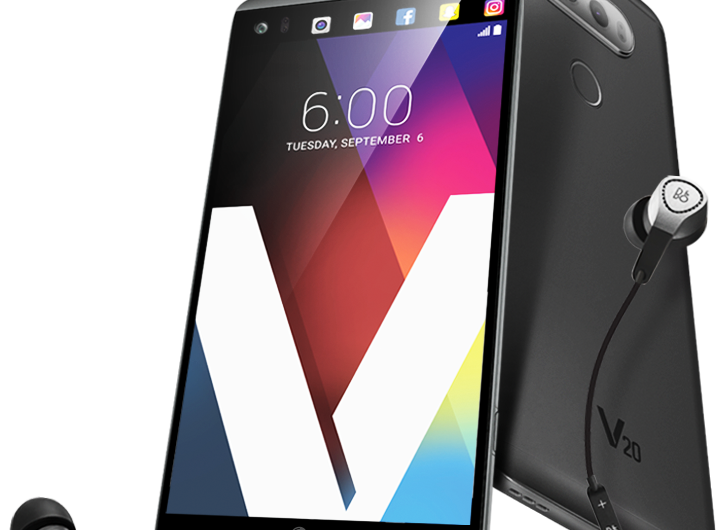What goes into choosing a new smartphone?
First, we choose an operating system - mainly iOS (Apple) or Android (Google).
If you choose iOS, your phone choice is pretty easy. Apple has three models of iPhones.
If you're choosing Android, you have a lot more choices.
The biggest chunk of the market is owned by Samsung with its two flagship phones, the Galaxy S7 and S7 Edge.
LG has a much smaller piece of the handset market, but its new flagship phone, the LG V20, has some features that differentiate it from Samsung's offerings.
I find most of my friends who use Android choose their handsets not based on brand but on one or two specific features.
The V20 has some features that most other phones lack.
The V20's 5.7-inch screen is the same size as Samsung's recalled Note 7 and bigger than the 5.5-inch screen of the S7 Edge.
The V20 has a screen resolution of 2560 by 1440 pixels for a density of 513 pixels per inch, which is among the best in its class.
There is also a second screen above the main screen. The second screen, a small strip at the top of the front bezel, is always on and can display a variety of useful information.
It's the first non-Google phone to run Android 7 (Nougat).
The V20 runs a Snapdragon 820 processor with 4 gigabytes of RAM and 64 gigabytes of onboard storage, along with a microSD card slot for adding more storage.
The 3200 milliamp-hour battery is removable, which is rare for a flagship phone. If you want to carry extra batteries, this is the phone for you.
The V20 has QuickCharge 3.0, which can charge the phone from empty to full in just over an hour. The charging port is USB-C.
It feels smaller than its large size, which makes it surprisingly pocketable.
Physically, it's 6.28 by 3.07 by 0.3 inches, and it weighs 6.14 ounces.
The screen is covered with Corning Gorilla Glass 4.
CAMERAS
The V20 has a dual-lens system on the main camera. You can switch between wide-angle or standard lenses. The main camera (standard lens) has a 16-megapixel sensor and an f/1.8 aperture. The wide-angle camera has an 8-megapixel sensor with an aperture of f/2.4.
The front-facing 5MP camera also has a wide-angle lens, which makes it easy to shoot selfies with even large groups of people.
It can shoot video with a feature called Steady Record 2.0 that uses gyroscope-based image stabilization and software to smooth the video.
AUDIO
The V20 is a superstar when it comes to audio.
First, it still has a headphone jack. It also has a hi-fi audio mode that uses four digital-to-analog converters to enhance the sound.
There are three microphones that can record stereo audio in 24-bit FLAC (lossless), which is a feature I can't recall on any other smartphone.
IN USE
The LG V20 is a slick-looking phone with a metal and glass design and very little on the front besides the screen. The top and bottom bezels are about a quarter-inch deep. The Android controls are not actual buttons but appear on the screen when you need them.
The glass of the front screen isn't beveled on the edges, and it felt a bit sharp to the touch. It was the only part of the V20 that didn't feel top-notch.
The power button has a fingerprint sensor, and it's on the back under the cameras in a spot where your index finger falls when you hold the phone.
The V20 is fast, big and has a really good screen.
The secondary screen can be customized to launch your favorite apps.
The V20 is available in titan gray or silver.
PRICING AND AVAILABILITY
The V20 is available from all the major wireless carriers. The phone I reviewed was from AT&T and has a cash price of $829.99, or 30 monthly payments of $27.67.
Check your carrier for pricing.
CONCLUSIONS
As I said, people usually pick Android phones based on a feature or two.
Perhaps you want a really big screen or a removable battery or a dual-lens camera.
Whatever the reason, the LG V20 has a lot to like. I see this as a nice substitute for the Note 7, but it does lack a stylus and isn't water-resistant.
Such is life with a removable battery.
The V20 has the specs to keep up with most flagship phones and a few unique features that will keep it on plenty of short lists.
—-
Pros: Great screen(s), removable battery, dual-lens camera
Cons: Expensive, screen edges feel sharp, not water-resistant
Bottom line: There's a lot to like, especially if you want a big screen.
©2016 The Dallas Morning News
Distributed by Tribune Content Agency, LLC.























